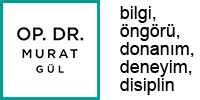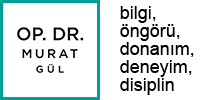Glaucoma and Selective Laser Treatment
What is Glaucoma?
Glaucoma, also known as ocular hypertension, is a condition where the intraocular pressure (IOP) rises to levels that cause damage to the optic nerve and visual field. The most common type is open-angle glaucoma.
Normally, aqueous humor, the fluid inside the eye, nourishes ocular tissues and is drained through special channels. When these drainage channels become blocked, the fluid cannot exit properly, leading to increased intraocular pressure and subsequent damage to the optic nerve.
Because glaucoma-related vision loss is irreversible, early diagnosis and treatment are essential. Treatment focuses on reducing fluid production or improving drainage to lower IOP.
Traditionally, eye drops have been the first-line treatment for lowering IOP. However, they have several drawbacks:
- High cost
- Daily application difficulties
- Side effects
- Poor patient compliance
As an alternative to medications, argon laser trabeculoplasty (ALT) was the first laser treatment introduced for glaucoma. However, ALT was not widely adopted due to limited efficacy and the tendency for the treated areas to re-close over time.
Recently, a new FDA-approved laser technology, Selective Laser Trabeculoplasty (SLT), has gained global recognition as a safe and effective treatment for open-angle glaucoma.
How Does Selective Laser Trabeculoplasty (SLT) Work?
SLT improves aqueous outflow by targeting pigmented trabecular meshwork cells, clearing obstructions, and reducing intraocular pressure.
Unlike ALT, SLT does not affect non-pigmented cells or connective tissue, meaning the treated area remains open without scarring. This prevents reclosure, ensuring a longer-lasting effect compared to older laser methods.
Due to this advantage, more than 50% of patients who previously did not respond to ALT experience significant improvement with SLT.
Why is SLT a Superior Glaucoma Treatment?
- Safe and selective: Targets only pigmented cells, preserving surrounding tissue.
- Long-lasting effect: Does not cause scarring, preventing closure of treated areas.
- Minimal side effects: Only a temporary rise in intraocular pressure may occur.
- Effective even when ALT fails.
- Eliminates medication drawbacks: No costly medications, side effects, or patient compliance issues.
- No serious surgical risks: Unlike glaucoma surgeries, SLT avoids major complications.
Due to these advantages, SLT has become an important and preferred treatment option for glaucoma worldwide.

